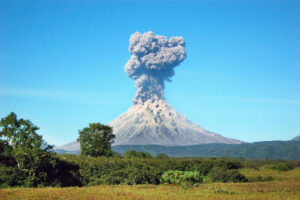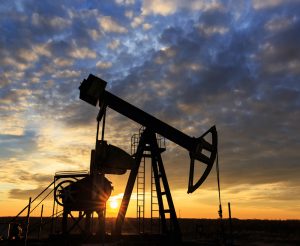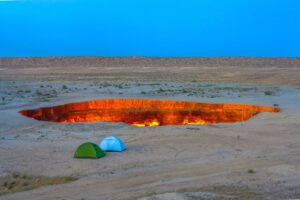 [By Guest writer – Loosetooth]
[By Guest writer – Loosetooth]
Volcanoes have always fascinated us with their explosive eruptions, lava flows, and the creation of new landscapes. For centuries, we’ve believed that volcanic activity is driven by the movement of tectonic plates and the release of pressure from deep within the Earth. But what if there’s more to the story? What if the true cause of volcanism lies deep underneath the Earth’s crust, in the chemical oxidation of underground substances? In this blog post, we’ll explore a radically different theory, challenging conventional wisdom and offering new perspectives on the origin of volcanism.
Volcanic Gases
Volcanic eruptions are known for their spectacular displays of nature’s raw power. Central to this awe-inspiring phenomenon are the gases that billow forth from within the Earth, carrying with them the secrets of the volcano’s inner workings. These volcanic gases, while varied in composition, all share a common origin rooted in the elemental processes of combustion and oxidation. To understand this theory, let’s begin by examining the composition of volcanic gases.
The reigning champion among volcanic gases, water vapor, is the most abundant, often constituting over 60% of total volcanic emissions. The second most prevalent gas, carbon dioxide, typically contributes to volcanic emissions in the range of 10% to 40%. Among the most visually striking products of volcanic eruptions, ash, mostly silicon oxide (SiO2), often plays a pivotal role. It’s important to note that not all volcanoes produce ash in significant quantities, but for those that do, it can make up a substantial fraction of the emissions, possibly overtaking CO2 in terms of its prevalence. Another common component of volcanic emissions is sulfur dioxide (SO2), typically ranking as the fourth most prevalent product (or third most common for volcanoes with minimal ash production). When sulfur dioxide comes into contact with water, it undergoes a transformation, giving rise to sulfuric acid, which can subsequently contribute to the formation of acidic rain.
Now, it might be intriguing to know that all of these volcanic emissions have something rather unexpected in common. You see, volcanoes are renowned for their fiery explosions and molten rivers, but what connects them all is a process that might not be immediately obvious – combustion!
Volcanism as Oxidation
When we look at the list of volcanic gases – water vapor, carbon dioxide, ash (silicon dioxide), and sulfur dioxide – it might seem peculiar that they share a common origin. Yet, beneath the Earth’s surface, a fiery alchemy unfolds. Water vapor, most abundant among volcanic gases, arises from the combustion of hydrogen gas (H2) with oxygen (O2). Similarly, carbon dioxide, the second most prevalent gas, emerges from the combustion of hydrocarbons – in the form of carbon (C) and hydrogen (H) atoms – with oxygen. Meanwhile, sulfur dioxide (SO2), the often-overlooked component, results from the combustion of hydrogen sulfide (H2S) or elemental sulfur (S) with oxygen. And then there’s ash, composed primarily of silicon dioxide (SiO2), a visually striking product of volcanic eruptions that forms as a result of the combustion of silane (SiH4) when it encounters oxygen-rich environments.
Regarding water vapor, it is important to note that during a volcanic eruption, some of the water vapor may originate from the heating up of underground water sources, and its presence may not be solely attributed to combustion processes.
Now, while the combustion reactions with oxygen behind each of these molecules provide a revealing insight, they alone do not constitute conclusive evidence. However, when we consider the additional factors driving volcanism—intense heat and explosiveness—these combustion processes come together to form a comprehensive and compelling alternative explanation for the origin of volcanic activity.
Silane, ash and explosiveness
 Volcanic ash, primarily composed of silica (SiO2), is a testament to the fiery chemistry lurking beneath the Earth’s surface. The chemical composition of the ash is again the result of combustion; it emerges from the intriguing reactions involving a compound called silane. Silane (SiH4) shares a structural resemblance with methane (CH4) but swaps out the carbon atom for silicon, making it a volatile chemical entity. Silane can also form polymers, similar to longer hydrocarbon chains. Its extreme chemical instability becomes evident when it encounters oxygen, whether in the air or water. When silane meets the oxygen in water molecules, it swiftly transforms into silicon dioxide (silica) and liberates hydrogen gas—a reaction that contributes to the explosive nature of volcanic eruptions. The combustibility of silane in the presence of air is so pronounced that it can spontaneously ignite if released into the atmosphere, as demonstrated in this video, showing a release of silane-containing gas, explosively converting into volcanic ash. Notice the resemblance to a chemical explosion, e.g., a bomb.
Volcanic ash, primarily composed of silica (SiO2), is a testament to the fiery chemistry lurking beneath the Earth’s surface. The chemical composition of the ash is again the result of combustion; it emerges from the intriguing reactions involving a compound called silane. Silane (SiH4) shares a structural resemblance with methane (CH4) but swaps out the carbon atom for silicon, making it a volatile chemical entity. Silane can also form polymers, similar to longer hydrocarbon chains. Its extreme chemical instability becomes evident when it encounters oxygen, whether in the air or water. When silane meets the oxygen in water molecules, it swiftly transforms into silicon dioxide (silica) and liberates hydrogen gas—a reaction that contributes to the explosive nature of volcanic eruptions. The combustibility of silane in the presence of air is so pronounced that it can spontaneously ignite if released into the atmosphere, as demonstrated in this video, showing a release of silane-containing gas, explosively converting into volcanic ash. Notice the resemblance to a chemical explosion, e.g., a bomb.
This notion of silane serving as the precursor to volcanic ash gains further credence when we compare the silica content of volcanic ash. Remarkably, low-energy volcanic eruptions, characterized by limited explosiveness, yield ash with a notably lower silica content compared to the volcanic ash produced by highly explosive volcanoes. This observation underscores the role of silane in driving volcanic explosiveness and offers valuable insights into the dynamics of volcanic activity. Quote from wikipedia:
Low energy eruptions of basalt produce a characteristically dark coloured ash containing ~45–55% silica that is generally rich in iron (Fe) and magnesium (Mg). The most explosive rhyolite eruptions produce a felsic ash that is high in silica (>69%) while other types of ash with an intermediate composition (e.g., andesite or dacite) have a silica content between 55 and 69%.
Silane content and volcanic types
When we delve into the intriguing possibility that all volcanic activity finds its roots in oxidation processes—where hydrogen-rich, reduced substances from the Earth’s depths meet the oxygen-rich exterior—we discover a compelling framework to explain various volcanic types:
On one hand, we encounter volcanic phenomena driven by the combustion of substances which result only in gaseous compounds. Among these key precursors are hydrogen gas, hydrocarbons, and sulfur. The combustion of these substances generates hot gases, which not only heat the surrounding rock but also exhibit lower density than the neighboring materials. These combined properties facilitate the melting of rock and the ascent of these gas-laden materials, ultimately giving rise to gas and lava reaching the surface. This leads to relatively “gentle” volcanic activity, characterized by the emission of substantial amounts of gas and lava. These eruptions are categorized as effusive eruptions, often exemplified by the serene nature of Hawaiian volcanoes.
 On the other hand, volcanoes in which silane assumes a pivotal role exhibit markedly different characteristics. The higher the silane content in the fuel mixture, the greater the production of volcanic ash and the greater the explosiveness during eruptions. This principle neatly accounts for the diverse explosive volcanic types, including strombolian, vulcanian, pelean, plinian, and surtseyan eruptions. Notably, the surtseyan type is distinguished by the interaction of silane with water beneath the Earth’s surface, resulting in the production of copious amounts of ash. This underscores silane’s unique propensity to react with water, leading to the formation of ash and the release of heat.
On the other hand, volcanoes in which silane assumes a pivotal role exhibit markedly different characteristics. The higher the silane content in the fuel mixture, the greater the production of volcanic ash and the greater the explosiveness during eruptions. This principle neatly accounts for the diverse explosive volcanic types, including strombolian, vulcanian, pelean, plinian, and surtseyan eruptions. Notably, the surtseyan type is distinguished by the interaction of silane with water beneath the Earth’s surface, resulting in the production of copious amounts of ash. This underscores silane’s unique propensity to react with water, leading to the formation of ash and the release of heat.
Furthermore, silane’s influence extends beyond volcanic eruptions, likely playing a role in certain explosive earthquakes and their possible tsunamis, further underscoring the far-reaching impact of this intriguing compound in Earth’s dynamic processes.
Migration of Underground Fuels
As we continue our exploration of the theory that volcanic activity is fundamentally linked to the combustion of underground substances, it’s essential to consider the nature of these substances and their unique ability to migrate through the Earth’s crust. Unlike solid fuels, which face significant barriers to movement, liquid and gaseous fuels can flow through cracks and other openings to migrate upward. This upward migration is probably also (at least partially) caused by their lower density. As such, they play a pivotal role in the dynamic processes that drive volcanic eruptions. In fact, we can explain every facet of volcanic activity from the following liquid and gaseous precursors: hydrogen gas, hydrocarbons, silanes (hydrosilicones) and hydrogen sulfide. Does this prove that all volcanic activity is only created by these substances? No. But it is an intriguing coincidence.
When we reverse direction and examine the exhaust compounds commonly observed in volcanic activity—water vapor, carbon dioxide, ash (silicon dioxide), and sulfur dioxide—a similar pattern emerges. These substances can all originate from one of the liquid or gaseous fuels mentioned above.
It is important to note that while these migrating substances are (in all probability) primarily responsible for the composition of volcanic gases, the formation of lava, which constitutes the molten rock that flows from volcanoes, operates on a different principle. Lava can be composed of a wide range of rock types, melting and ascending due to the intense heat generated by the combustion of fuels. This dynamic interplay between liquid and gaseous substances, solid rock, and the Earth’s internal forces showcases the complexity of volcanic processes.
Elemental Composition of Earth’s Crust: Clues from Underground Mobility
 One of the other intriguing facets of Earth’s geology lies in the elemental composition of its crust, which is primarily comprised of oxygen, silicon, aluminum, iron, and calcium, in that order of abundance. While this elemental makeup has long been a subject of geological study, we can now revisit it in light of the theory proposing the combustion of underground substances as a driving force behind volcanic activity.
One of the other intriguing facets of Earth’s geology lies in the elemental composition of its crust, which is primarily comprised of oxygen, silicon, aluminum, iron, and calcium, in that order of abundance. While this elemental makeup has long been a subject of geological study, we can now revisit it in light of the theory proposing the combustion of underground substances as a driving force behind volcanic activity.
The theory suggests that the mobility of underground fuels, particularly liquid and gaseous precursors, plays a crucial role in volcanic processes. Notably, the mobility of these precursors aligns remarkably well with the observed abundance of certain elements in the crust.
First and foremost is oxygen, the most abundant element in the Earth’s crust. Oxygen in the crust predominantly originates from water vapor, which arises from the combustion of hydrogen gas (H2) with oxygen (O2). Water, being in liquid or gaseous form on the Earth, has a remarkable capacity to migrate through the Earth’s crust via cracks and fissures, making it an ideal conveyor of oxygen from deep within the Earth to the surface. As this water reaches the surface, it undergoes changes due to solar radiation. Over extended periods of time, the hydrogen is gradually flung off, away from the planet and leaves oxygen behind, through an effect called Atmospheric Escape. This remaining oxygen contributes to the composition of the Earth’s atmosphere, and eventually to the crust when it combines with other reduced material coming from deeper within. This continuous hydrogen migration from the mantle to the crust, where it is then shed into space, is a core idea that fits seamlessly within the framework of our theory of volcanism, while also providing a compelling explanation for the composition of the Earth’s atmosphere and the elemental makeup of its crust.
Silicon, another key element found in the Earth’s crust, also has an intriguing connection to the theory. Silicon dioxide (SiO2), a major component of volcanic ash, forms as a result of the combustion of hydrosilicones (silanes) when they encounters oxygen-rich environments. Silane’s mobility facilitates the upward migration of silicon, providing a plausible explanation for its abundance in the Earth’s crust.
While the mobility of oxygen and silicon’s precursors aligns with the observed crustal composition, further investigation is warranted to explore similar mobility pathways for aluminum, iron, and calcium, the other prominent elements in the Earth’s crust. These elements, not yet fully understood in the context of this theory, present an exciting area for future research.
The Link to Abiotic Fuel Theory
 The Abiotic fuel theory, suggests that the Earth’s interior is a natural source of hydrocarbons and other reduced, hydrogen-rich substances, not originating from ancient life but rather from non-biological processes deep within the planet. If you did not read it yet, check out my post on the abiotic oil theory.
The Abiotic fuel theory, suggests that the Earth’s interior is a natural source of hydrocarbons and other reduced, hydrogen-rich substances, not originating from ancient life but rather from non-biological processes deep within the planet. If you did not read it yet, check out my post on the abiotic oil theory.
The link between volcanic activity and the abiotic fuel theory is profound. If volcanic eruptions are indeed fueled by underground hydrogen-rich substances such as hydrocarbons and silanes, it fundamentally challenges the conventional belief that all Earth’s fuels have a biotic origin. The hypothesis that volcanic activity would be exclusively driven by the chemical alteration of biogenic substances (fossil fuel theory) challenges scientific understanding. It seems improbable that all volcanic eruptions, which exhibit immense diversity in terms of location, characteristics, and their huge scale, can be attributed solely to the processing of matter with biological origins.
Moreover, silane rules out the possibility of the fuels driving volcanism being of biological origin. Firstly, the evidence supporting the chemical reactivity of silane as the fundamental cause for explosive volcanic eruptions is compelling. Secondly is the implausibility, bordering on the illogical, of silane forming from biological sources. When considering these two assertions together, a clear conclusion emerges: a substantial portion of the fuels responsible for driving volcanic activity must originate from non-biological sources. As such, this theory for the cause of volcanism is completely in line with the abiotic fuel theory. In fact, it complements it.
Eternal Flames: When Earth’s Fuels Ignite and Never Go Out
As we delve deeper into the fascinating world of Earth’s internal processes and the origins of volcanic activity, it’s intriguing to consider the remarkable endurance of underground fuel combustion. While we’ve primarily focused on the role of fuels in driving volcanic eruptions, there are instances on the Earth’s surface where these fuels have been ‘accidentally’ ignited, resulting in fires that have burned for years, decades, and even centuries. These real-world examples shed light on the potential for similar processes to occur underground, lending further credence to our exploration of non-biological fuel sources as drivers of volcanic activity. Here are some examples:
Centralia, Pennsylvania, USA: One of the most famous cases of a perpetually burning underground coal fire is the Centralia mine fire in Pennsylvania, USA. What began as a routine landfill fire in 1962 ignited a coal seam beneath the town. Despite extensive efforts to extinguish it, the fire continues to burn to this day, releasing smoke and gases into the ground above. This enduring blaze serves as a vivid reminder of the Earth’s capacity to sustain underground fires for extended periods.

The ‘Door to Hell’ in Turkmenistan: In the heart of the Karakum Desert lies the enigmatic Darvaza Gas Crater, often referred to as the ‘Door to Hell.’ This massive crater formed in 1971 when a Soviet drilling rig accidentally tapped into a vast underground natural gas deposit. Fearing the release of harmful gases, the decision was made to ignite the gas to burn it off, expecting it to last only a few weeks. However, the Darvaza Crater has been burning ever since, casting a fiery glow over the desert landscape.
The Burning Mountain of Australia: Mount Wingen, also known as Burning Mountain, is located in New South Wales, Australia. This geological oddity has been smoldering for an estimated 6,000 years, making it one of the longest continuously burning underground coal seams in the world. As with Centralia, the cause of this eternal flame is the combustion of coal deep within the Earth, resulting in the emergence of smoke and heat from the ground.

Yanar Dag in Azerbaijan: In the Absheron Peninsula of Azerbaijan, a peculiar natural phenomenon known as Yanar Dag, or the ‘Burning Mountain,’ has been captivating observers for centuries. A natural gas seepage ignited by a shepherd’s careless cigarette in the 1950s continues to burn to this day. This unceasing flame is a testament to the Earth’s underground stores of combustible gases and their potential to sustain fires over extended periods.
These examples, spanning different continents and geological settings, highlight the enduring nature of subterranean fires fueled by Earth’s underground resources, which seem to be practically limitless in nature.
Closing Thoughts
In conclusion, the theory proposing the combustion of underground substances as the driving force behind volcanic activity offers a fascinating departure from traditional explanations. While it presents a compelling case, it’s essential to acknowledge that further research and investigation are needed to confirm its validity. Key areas to explore include conducting comprehensive geochemical analyses such as recovering silanes from a volcanic vent, examining the geological features associated with different volcanic types, and forming more detailed models for the migration and combustion of these fuels. These models could include predictions for mobility pathways for aluminium, iron and calcium, as their concentration in the crust is not yet understood or explained from the perspective of this theory.
For further reading I recommend:
- Hydridic Earth: The New Geology of Our Primordially Hydrogen Rich Planet, ISBN-13: 978-0969450627
-
A publication on the Chemical Differentiation of Planets: A Core Issue, DOI 10.3847/1538-4357/ac300b Suggesting a hydrogen rich planet interior with a hydrogen concentration of about 4% by weight.
This article was written by a guest writer Loosetooth.
Leave a Reply